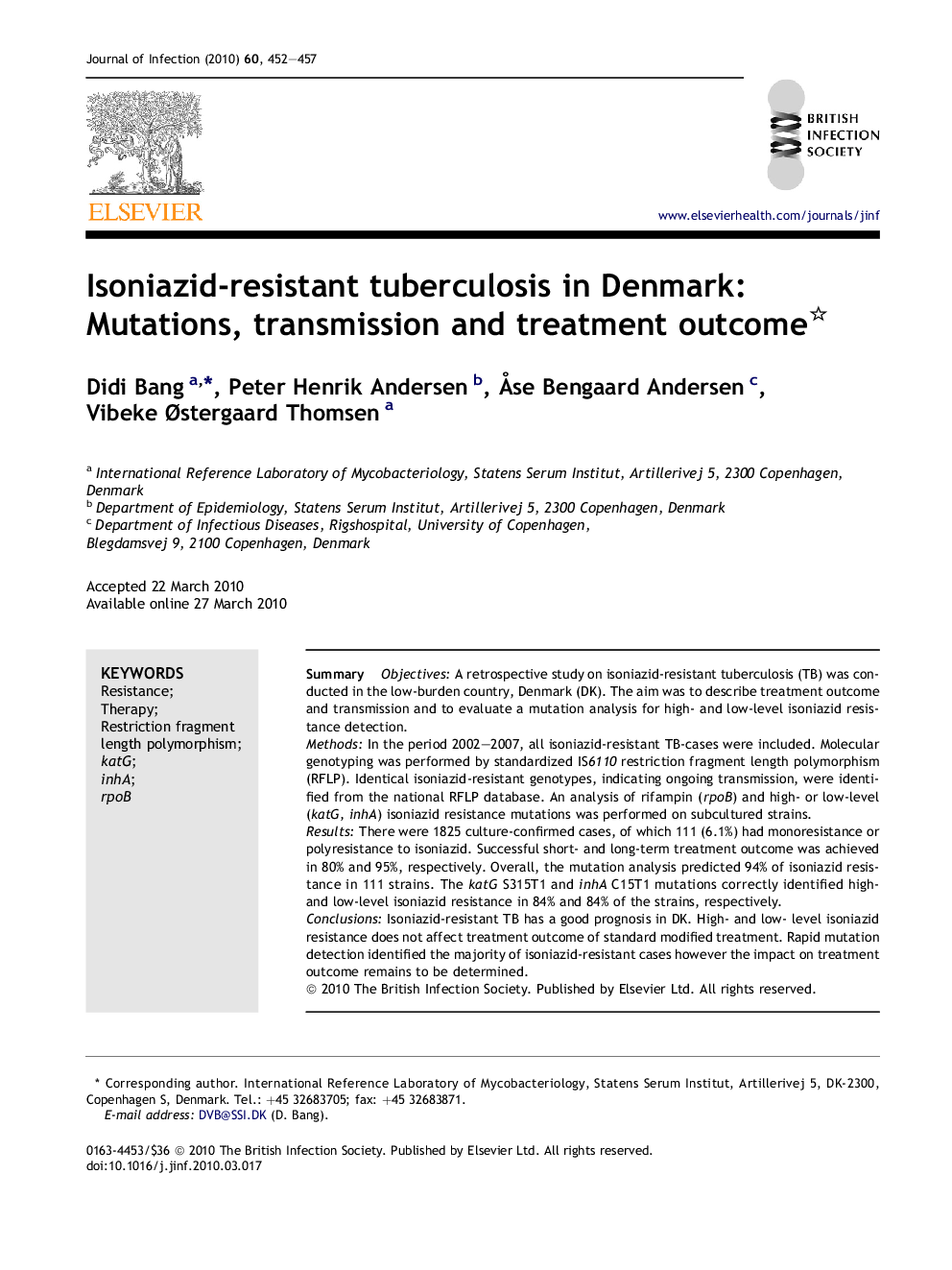| Article ID | Journal | Published Year | Pages | File Type |
|---|---|---|---|---|
| 3375939 | Journal of Infection | 2010 | 6 Pages |
SummaryObjectivesA retrospective study on isoniazid-resistant tuberculosis (TB) was conducted in the low-burden country, Denmark (DK). The aim was to describe treatment outcome and transmission and to evaluate a mutation analysis for high- and low-level isoniazid resistance detection.MethodsIn the period 2002–2007, all isoniazid-resistant TB-cases were included. Molecular genotyping was performed by standardized IS6110 restriction fragment length polymorphism (RFLP). Identical isoniazid-resistant genotypes, indicating ongoing transmission, were identified from the national RFLP database. An analysis of rifampin (rpoB) and high- or low-level (katG, inhA) isoniazid resistance mutations was performed on subcultured strains.ResultsThere were 1825 culture-confirmed cases, of which 111 (6.1%) had monoresistance or polyresistance to isoniazid. Successful short- and long-term treatment outcome was achieved in 80% and 95%, respectively. Overall, the mutation analysis predicted 94% of isoniazid resistance in 111 strains. The katG S315T1 and inhA C15T1 mutations correctly identified high- and low-level isoniazid resistance in 84% and 84% of the strains, respectively.ConclusionsIsoniazid-resistant TB has a good prognosis in DK. High- and low- level isoniazid resistance does not affect treatment outcome of standard modified treatment. Rapid mutation detection identified the majority of isoniazid-resistant cases however the impact on treatment outcome remains to be determined.
